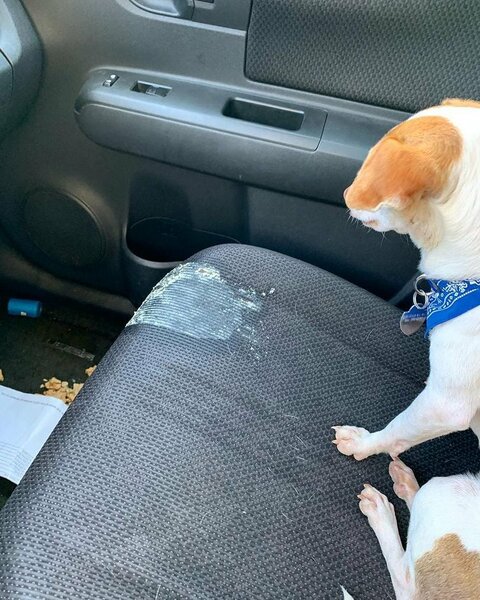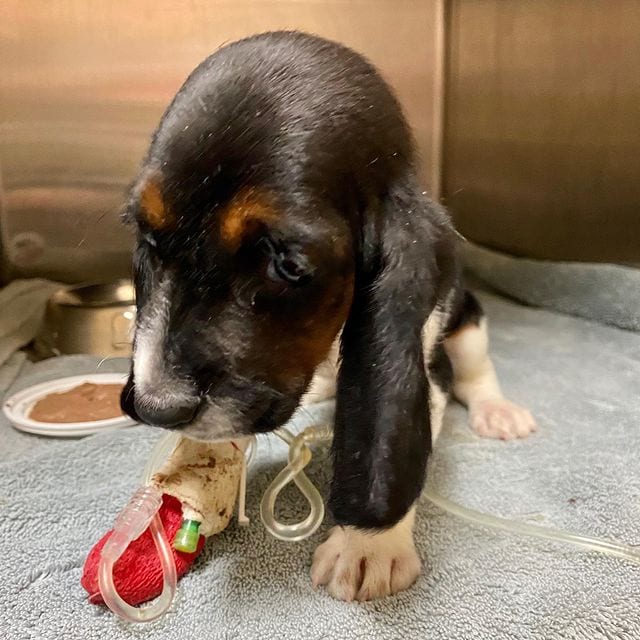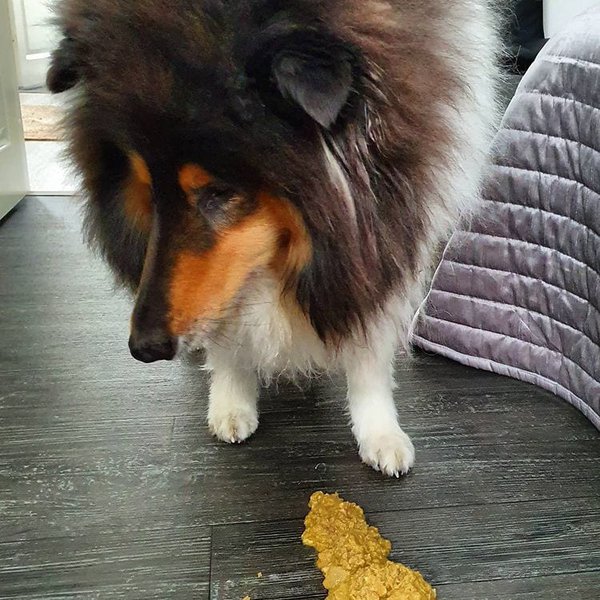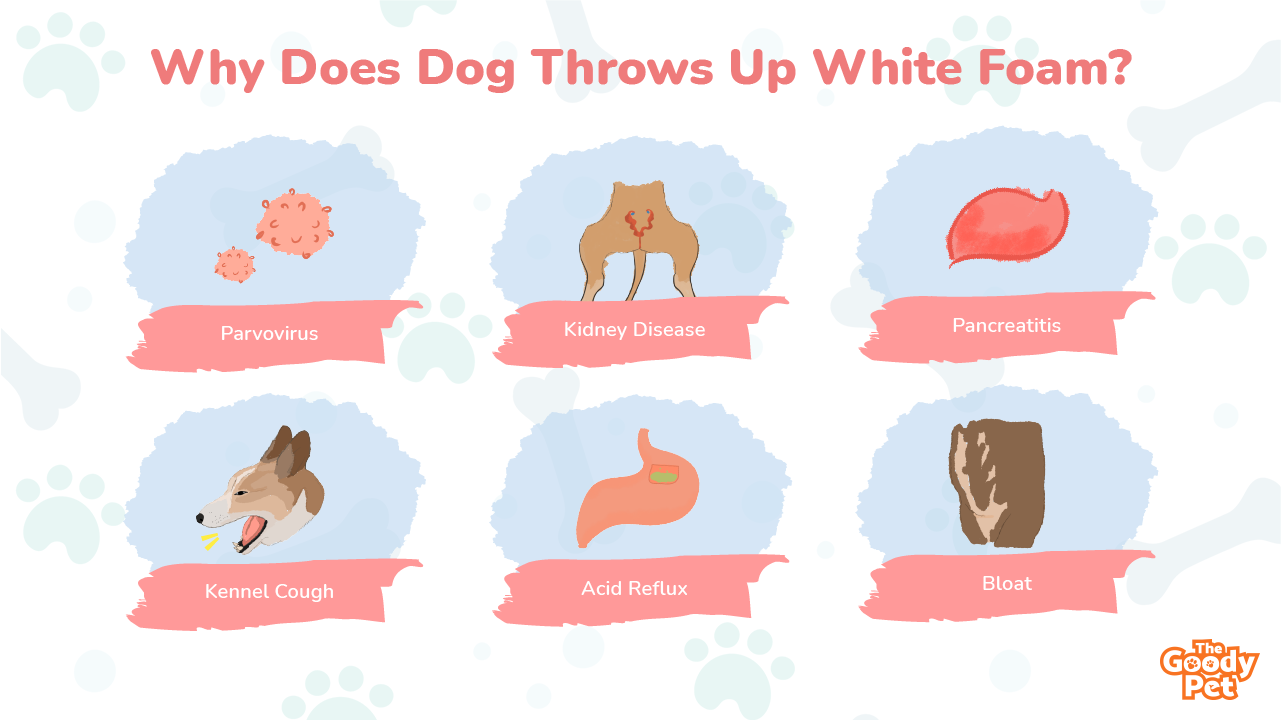Vomiting is never a fun experience for a dog owner, or their pup. In most cases, it’s simply the result of an upset stomach or eating something they shouldn’t have
There are a few potential causes of your dog vomiting white foam. It could be due to something as simple as eating too fast or drinking too much water. It could also be a sign of more serious problems like digestive issues, liver disease, or kidney disease.
If your dog is experiencing any other symptoms, such as diarrhea or lethargy, it’s important to take them to the veterinarian right away. In most cases, a trip to the vet can help identify the cause of the vomiting and get your pup back on the road to recovery.
Why Does Your Dog Throws Up White Foam?

When your dog is throwing up white foam, it could be caused by several factors.
Indigestion
When your dog ingests something that irritates their stomach, such as grass, or dirt, the irritation can lead to throwing up white foam. Indigestion should clear up in no time in most cases.
Gastroenteritis
If your dog is throwing up white foam and has diarrhea, this may result from gastroenteritis. This condition can often be accompanied by heaving and gagging after your pooch eats or drinks.
Acid Reflux
Is your pup throwing up white foam in the mornings? This is usually due to the build-up of acid in the stomach overnight.
In such cases switching up your pooch’s diet may help remedy the problem. Bland foods such as cooked chicken and rice can help to keep acid reflux at bay.
Kennel Cough
Kennel cough is the canine equivalent of the common cold.
It can cause your pooch to throw up white foam. Other symptoms of kennel cough are coughing, a runny nose, and loss of appetite. While kennel cough is typically mild, seek vet assistance if it does not clear up in a week.
Bloat
When your dog is throwing up white foam and has a swollen abdomen, this is usually a symptom of bloat. This condition is caused by the build-up of gas, fluid, or food in the stomach. Bloat is a serious condition that requires immediate treatment.
Pancreatitis
If your dog has pancreatitis, one of the symptoms could be throwing up white foam. Other symptoms can include diarrhea, lethargy, and dehydration.
This is a severe inflammatory condition, and you should take your dog to the vet immediately.
Kidney Disease
If your dog is throwing up white foam and shaking, this may be an indication that your pooch has kidney disease.
This condition often has other symptoms, such as trouble urinating and disorientation.
Parvovirus
Small pups are susceptible to the highly infectious parvovirus. If your pup is throwing up white foam in addition to having a fever and bloody diarrhea, consult your vet immediately, as these are symptoms of parvovirus.
What Does Parvo Vomit Look Like?

Parvovirus is a highly infectious disease that tends to affect puppies. The disease is highly contagious and can be fatal for pups so keeping a lookout for the symptoms is important. The main symptoms of parvovirus include:
Vomiting
Since parvo is a gastrointestinal condition, one of the symptoms of this disease is vomiting. Parvo vomit can be clear, yellow, or brown in color. You will also notice foaming at the mouth accompanied by drooling.
Diarrhea
Bloody diarrhea is one of the symptoms of parvovirus. If you notice blood in your pups’ stool in addition to vomiting, seek medical attention immediately.
Fever
If your puppy has Parvo, you will notice that it will develop a fever. Their skin will feel warm to the touch and you will find that their belly area is warm and sticky.
Lethargy
Puppies are typically very active and playful but if your pooch has Parvo, they will have no interest in activities. If your puppy refuses to move, stand, or walk, this lethargy can be a symptom of parvovirus.
Loss Of Appetite
Puppies with Parvo will refuse food and when they eat they will throw up the little that they do eat.
Dehydration
Constant vomiting and diarrhea will lead to dehydration and your puppy will become dehydrated as a result of parvovirus. This condition can be fatal and you should seek immediate veterinary care if your dog has any symptoms of the parvovirus.
When Should You Be Concerned About Your Dog Throwing Up?

Dog vomit is something every pet parent has to contend with once in a while. In most cases, vomiting clears up in no time. However, in some cases, your dog throwing up should be cause for concern.
If You Suspect Poisoning
If your suspect your pooch has ingested something toxic, seek immediate veterinary care. When your dog ingests a poisonous substance, vomiting will usually be one of the first telltale signs. Seek veterinary assistance urgently as some toxins can lead to serious complications.
Bloody Vomit
Blood in the vomit or stool is usually a warning sign that your pooch is suffering from more than just indigestion. Seek urgent treatment for your pooch if there is blood in their vomit or stool.
Frequent Vomiting
If your pooch is frequently vomiting, this is usually a sign that it may have an underlying condition. Consult your vet if your dog cannot seem to keep food down. Frequent vomiting often leads to dehydration which can be fatal.
Fever
If your dog also has a fever in addition to throwing up, always seek veterinary assistance. Fever is usually a sign of infection and calls for immediate treatment.
Difficulty Breathing
In some cases, your pooch may be throwing up and also experiencing difficulty in breathing. This is usually an indication of a serious underlying condition and requires urgent medical attention.
Shaking And Trembling
Is your dog shaking or trembling in addition to vomiting? When this happens, your pup may be suffering from kidney disease, and they require urgent treatment.
What Do You Do When Your Dog Throws Up White Foam?

If your furry friend throws up white foam, there are a few things you can do.
Fast Your Pooch
Let your dog go without food for some time after throwing up. This will allow the stomach time to settle. In most cases, your dog will be throwing up white foam because they have ingested something that is irritating their stomach. You do not want your pooch to eat more of what is irritating so remove all food for 12 to 24 hours.
Investigate
The next step is to check your pup’s vomit. It may be a little gross, but looking through the vomit can help you figure out what your pooch ate. In some cases, you will find the culprit that may have caused the stomach irritation, such as chunks of food or things such as candy wrappers or dirt.
Check For Other Symptoms
Vomiting can be a symptom on its own, or it can be accompanied by other symptoms. If your dog seems like its usual self after throwing up, then you may not need to worry.
However, additional symptoms like shaking, bloody diarrhea, lethargy, loss of appetite, or swollen abdomen are all cause for concern and require urgent veterinary care.
Try Home Remedies
When your pooch throws up white foam, there are some effective home remedies that can help ease the vomiting. Make sure that you give your pooch plenty of fluids to keep them hydrated.
Vegetable and chicken broth are great options for rehydrating. Ice chips are also good for combating dehydration. You can also give your pooch powder electrolytes to keep them properly hydrated.
How Can I Make My Dog Feel Better After Vomiting?
After your pooch has vomited, you can make them feel better by ensuring that they are not dehydrated.
Vomiting causes the body to lose water, and your pup ends up dehydrated.
Start by giving small amounts of water to your dog. Remember, if you give too much at a time, you may trigger vomiting again.
Powder electrolytes such as Pedialyte can help to replenish lost electrolytes and rehydrate your dog. You can get them from your vet or pharmacy.
Just like the water, electrolytes should be given in small amounts frequently to avoid triggering further vomiting.
You should withhold food from your dog for 12 to 24 hours after vomiting.
After the fast, reintroduce food in small quantities.
Go with nutrient-dense fresh foods such as Ollie personalized meals. These healthy meals are free of preservatives or additives and are formulated to deliver healthy, wholesome nutrition for your pooch.
Related Questions
How Do I Know If My Dog Has A Blockage?
You will know your dog has a blockage when they have abdominal bloating, loss of appetite, and lethargy. You may also see additional symptoms such as vomiting, diarrhea, excessive drooling, and straining to poop. Intestinal blockage can be fatal and requires urgent veterinary care.
What Are The First Signs Of Heartworms In Dogs?
The first signs of heartworms in dogs are persistent coughing and difficulty breathing. You will also notice that your dog has difficulty breathing, and they become sluggish and easily fatigued. Dogs with heartworms will eventually develop bulging ribs and abdomen.
What Are Signs Of Your Dog Dying?
If your dog is dying, you will notice that they become lethargic and lose interest in its surroundings. A dying dog will also lose their appetite and may suffer a loss of bladder and bowel control. It is common for dying dogs to have breathing anomalies and general loss of energy.





